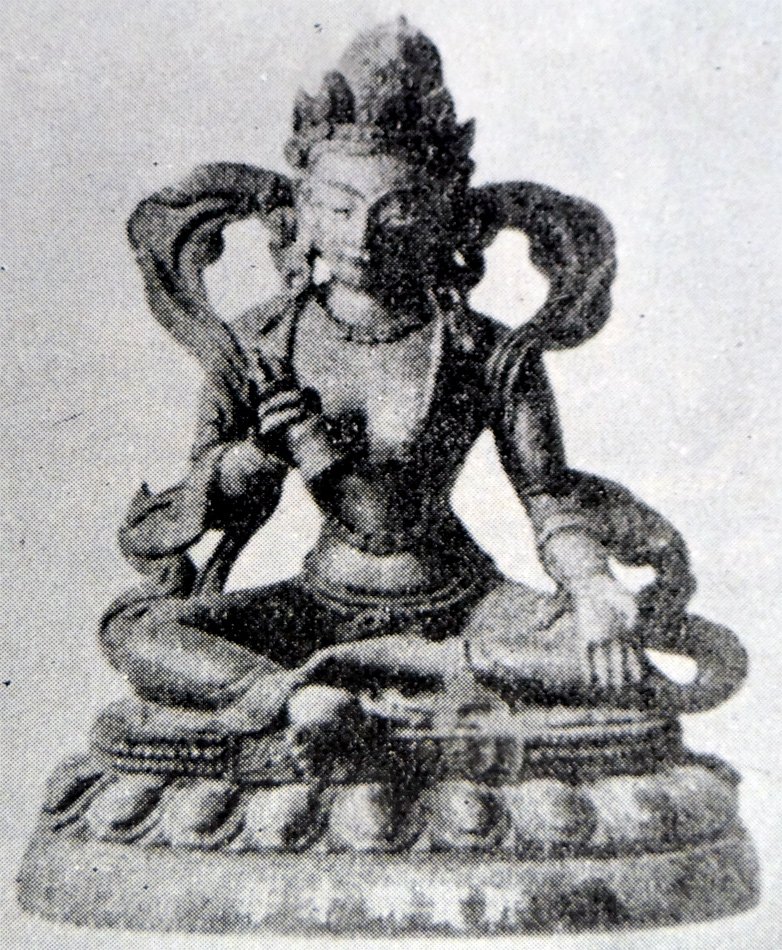The Indian Buddhist Iconography
by Benoytosh Bhattachacharyya | 1958 | 51,392 words | ISBN-10: 8173053138 | ISBN-13: 9788173053139
This page contains an iconography image of Four Pratisamvits: Pratibhana-Pratisamvit and represents figure 225 of the book Indian Buddhist Iconography, based on extracts of the Sadhanamala English translation. These plates and illustrations represent either photographs of sculptures or line-drawing reproductions of paintings or other representations of Buddhist artwork.
Figure 225 - Four Pratisaṃvits: Pratibhāna-Pratisaṃvit

Fig. 225: Pratibhāna-Pratisaṃvit
(Peiping)
In Buddhism Four Pratisaṃvits [viz., : Pratibhāna-Pratisaṃvit] are acknowledged as the branches of logical analysis, and these are named as Dharma (nature), Artha (analysis), Nirukti (etymological analysis) and Pratibhāna (context). These abstract ideas also received the attention of the Vajrayānists and were duly deified with human form, colour, weapon, and symbols. In a deified form these four Pratisaṃvits are found described in the Dharmadhātuvāgīśvara-maṇḍala of the Niṣpannayogāvalī. These are described below with necessary details in the same order in which they appear in the Maṇḍala.
4. Pratibhāna-Pratisaṃvit:
Colour: green;
Arms: two;
Symbol: bell.
The fourth and the last goddess in the series of Four Pratisaṃvit deities of the Buddhist pantheon is described in the Dharmadhātuvāgīśvara-maṇḍala in the following words: “On the North there is Pratibhāna Pratisaṃvit of the colour of an emerald (green), holding in her two hands a bell marked with a Vajra with three thongs”. A statuette of this extremely obscure deity is found in the Chinese collection at Peiping. Fig. 225 illustrates this Chinese statuette.
